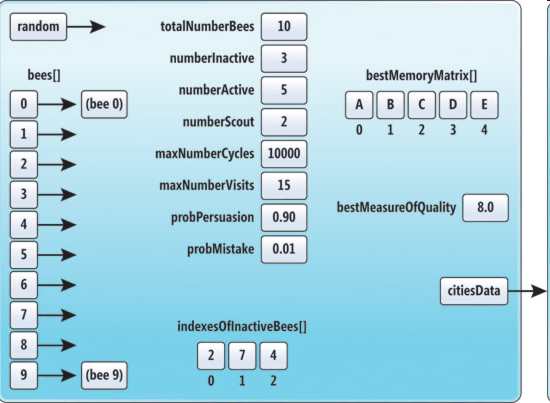| MapReduce, simulated bee colonies and more - April MSDN Magazine |
| Written by Ian Elliot |
| Friday, 08 April 2011 |
|
The April issue of MSDN magazine has a really interesting and very diverse collection of articles. It may be a cliché but there really is something for everyone.
As you might guess Azure, something that Microsoft is trying to get us all interested in figures in two articles. The first is also about the CQRS Command Query Responsibility Segregation pattern which was originally thought up by Bertrand Meyer as part of the Eiffel project. Basically it comes down to using methods as either a command or a query which is fairly core object oriented philosophy. Windows Azure Development: CQRS on Windows Azure tells you how to use the design as part of a shift from a three-tier structure to a message based architecture. It could be interesting even if you are not "into" Azure. Cloud Cache: Introducing the Windows Azure AppFabric Caching Service on the other hand is very Azure based and simply demonstrates how to use the built in cache for application data, session state etc. On a more traditional note is ASP.NET Web Pages: Introduction to WebMatrix. Which demonstrates how to use Microsoft's very strange new approach to building web sites. If you are working in a "big" team then Team Foundation Server: Visual Studio TFS Team Project and Collection Guidance provides some guidance on how to set things up For me though the two stars of the show are about topics that are more off the beaten track. The first deals with how to implement the MapReduce algorithm in F#. MapReduce in F#: Parsing Log Files with F#, MapReduce and Windows Azure. Don't be put off by the mention of Azure - it is used to supply some log files for the MapReduce algorithm to process. The final article might be regarded as not just off the beaten track but well into the unexplored territories - but that's good isn't it! Natural Algorithms: Use Bee Colony Algorithms to Solve Impossible Problems Algorithms that make use of swarm and collective intelligence are all the fashion at the moment and what could be more synonymous with swarm than the humble bee. So forget about artificial ants and find out about Simulated Bee Colony (SBC) algorithms. SBC algorithms seem to be good at solving combinatorial problems that otherwise might seem "impossible".
The hive representation of the TSP To prove that it works the example in C# solves the Travelling Salesman Problem (but the code seems to be missing at the moment). . That about wraps up the main articles. You can download any of them for free but there is still no ebook version which is an on-going missed opportunity for Microsoft. More information:
|
| Last Updated ( Friday, 08 April 2011 ) |


